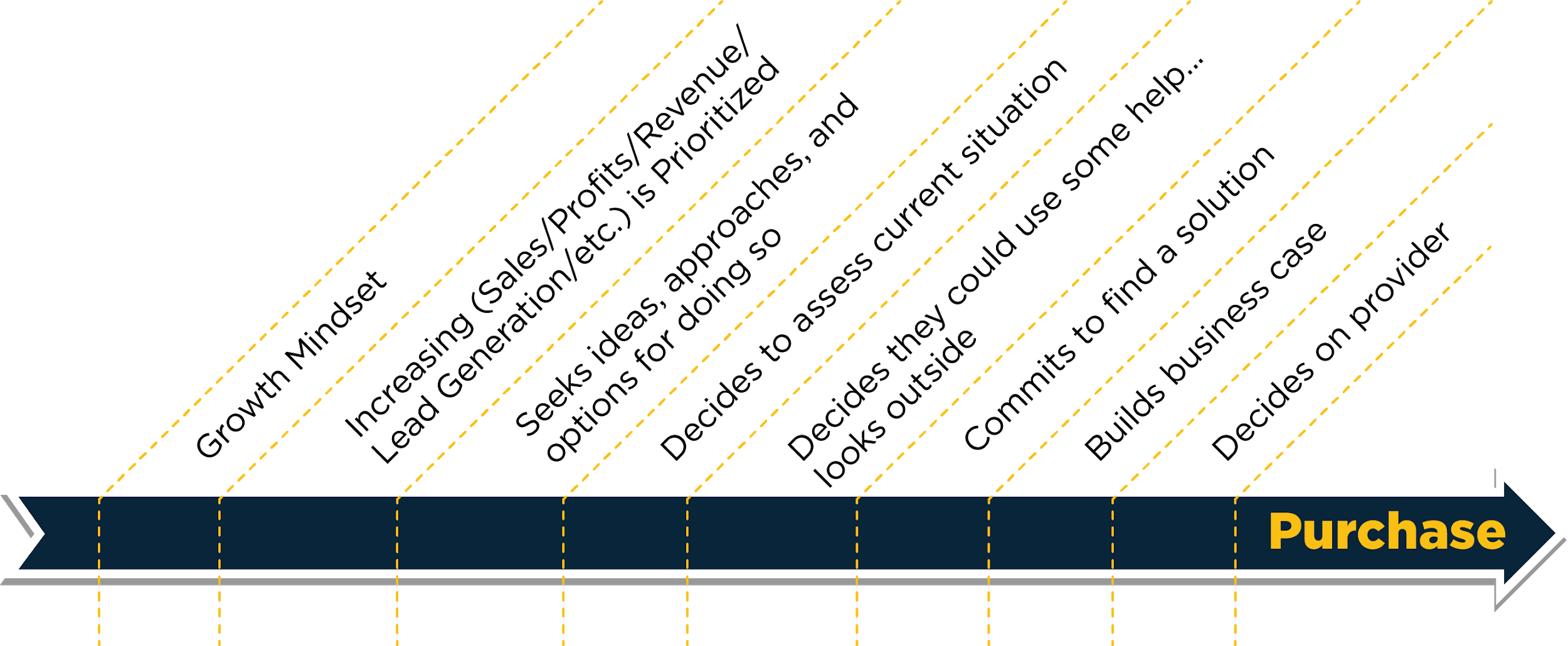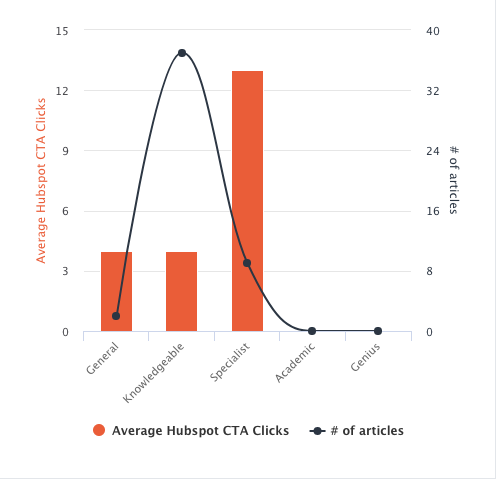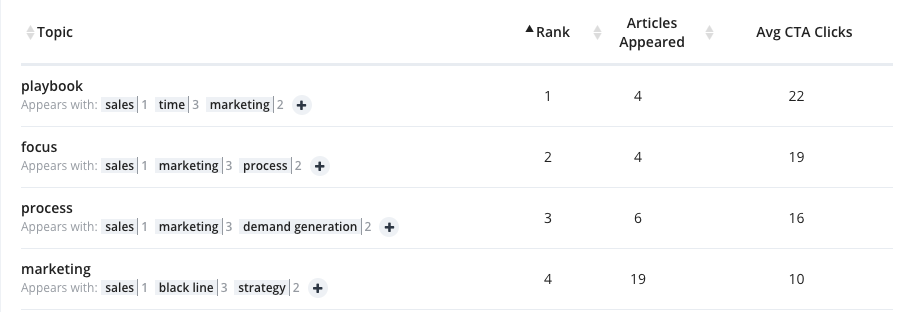 I’m a sales guy. I’ve been directly selling for more than three decades.
I’m a sales guy. I’ve been directly selling for more than three decades.
For the last two decades, I’ve worked with companies and salespeople to improve their sales processes and results.
I am also a HUGE believer in the value of content.
I believe that content is much like the American Express card—don’t try to sell without it.
I’ve been creating content for as long as I can remember.
And the one communications thing I get to hold over Gini Dietrich is that I started blogging before she did.
(Note from Gini: INCONCEIVABLE!)
I can confidently say that my company, Imagine Business Development, would not have survived the recession of 2008-2010 if we had not launched our blog in August 2005.
In 2012, my company began advising on inbound and content marketing.
Over the last six years, I’ve analyzed the content of hundreds of companies in almost 25 different industries.
I’ve interviewed (and worked with) both sides of the content marketing equation: the marketers responsible for creating content and the salespeople using it to drive more sales, faster, and at lower costs.
As content—both the amount created and the investments made in creating it—has expanded to historic proportions, the results that content is supposed to drive have not emerged.
Sales cycle times are increasing, as are lead and customer acquisition costs.
Content marketing just isn’t working.
While many people blame the content itself (too much bad content), my analysis draws a different conclusion.
By studying both successful and failed content marketing initiatives, I’ve found the quality of the content isn’t the critical differentiator.
While it is smart to produce quality content, it is no guarantee of success (and some successful efforts don’t have particularly good content).
Our analysis has traced the dominant cause of failure to one (or a combination) of five elements.
Content Marketing ≠ the Buyer Journey
The most common flaw in any content marketing strategy is not effectively aligning content with the buyer’s journey.
For content to be effective, marketers must move beyond the AIDA, or awareness, consideration, decision mapping models to define the actual path customers take.
If you want content to generate actions that lead to revenue, it’s not enough to share good content.
You must share the right content at the right time with the right person, in concert with any other interactions taking place.
Here’s an example of what we call our customer’s alpha journey:
(We have additional journeys mapped that align with various deviations and will also break down aspects of the journey in more detail when warranted.)

This map enables us to generate better content (from ideation through execution) and plan for, ensure, and measure use in the customer or revenue acquisition process.
Without a map like this, our content strategy would be blind.
Content Marketing is Not Aligned with a Clear Point-of-View
The biggest complaints I have about content are it is over-the-top promotional and filled with “we dos.”
Or, it’s written so matter-of-fact that it reads like a high school book report or college dissertation.
Business content should be created for one purpose only: to influence the reader towards an action.
In the book, The Challenger Sale: Taking Control of the Customer Conversation, authors Matthew Dixon and Brent Adamson share results of an in-depth study of what leads to top sales performance.
Their research highlights an approach taken by the best salespeople.
The message these sales reps deliver is designed to challenge customer thinking about their situation and the status quo.
Top performing content does the same thing.
It not only teaches but delivers a point-of-view challenging the reader to think differently and to act.
In today’s Zero Moment-of-Truth world, this is a place where sales teams need marketing more than ever.
This level of influence and personalized messaging was formerly left up to the salesperson.
In a consensus-decision world where prospects conduct their own parallel path, salespeople are not enough. They need strong point-of-view content to help.
Content Calendar is Not Data-Backed
I’ve always prided myself on knowing my audience. Entrepreneurs, growth executives, marketers, and salespeople are who I serve.
My personas are busy and attention-starved.
I’ve seen the success of Seth Godin’s blog, and I sought to create content that was short, sweet, and to the point.
For some years, my average blog post length was 250-450 words.
I knew this was working because I’d regularly get compliments from readers who told me both how much they enjoyed my blogs and how they enjoyed the brevity of my posts.
Then I saw data that put doubt in my head about whether my observations were correct.
I began testing longer blog posts, and an interesting thing happened.
The longer the post, the greater the impact.
Today, I get fewer verbal compliments on my blog and about 10x the qualified lead generation and lead movement.
I realized humans are horrible observers.
Simply put, we stink at identifying key elements that drive results.
Data is at the center of our content strategy.
Below are three examples of the type of data we use when developing and assessing our content strategy.
1. This is an analysis of recent content length, relative to completing the action of clicking on the selected call-to-action.

As you can see, blog posts between 1,000-2,000 words greatly outperform shorter posts.
2. This is an analysis of the educational level of content relative to clicks.

Despite common wisdom about where we should aim our content, we get better results when we write up to our audience, not down.
3. This is an analysis of the topic.

What’s interesting is that we get more action on topics related to marketing than sales.
For this reason, we ensure when writing about sales topics, they are also relevant to marketers.
Too Focused on Data When Creating Content
I know. This reason contradicts the third reason. I get it.
It’s really easy to get lost in data.
It would be easy for us to look at just the data I shared and decide that to succeed we should write about “Focused Playbooks for the Marketing Process,” designed to specialists, and the article should be 1,653 words.
And of course, if we did that, our content would quickly lose its effectiveness.
Businesses create content for a reason, not a number.
We don’t write blog posts, white papers, case studies, or whatever content you can think of because we want opens, clicks, downloads, etc.
We’re solving for something beyond the action. Be sure you’re clear on the outcome you want.
Use data to guide your decisions, not to rule them.
Not Designing Your Content for Use
The number one complaint I get from content creators is salespeople keep asking for new content when they don’t use the content they already have.
While this observation is generally true, I always challenge the marketer with this question: whose fault is that?
The marketer, of course, blames the sales rep (or manager).
So I follow my challenge by asking, “How easy do you make it for salespeople to use the content that you’re creating?”
That’s typically when the marketer starts mumbling.
It’s not enough to create great content that addresses key points and influences the people who read it to take action.
You must make it easy to use.
If you want the sales side to use the content you worked hard to create (and by extension become the sales team’s hero) you must make it easy (and don’t expect the rep to read the content).
Know what each piece of content will be used for (this means the situation, the type of account, persona, etc.).
And understand how and when the content should be used.
Distribute the content. For example, we package content into brief “snippets” that the rep can simply paste into an email or chat communication or even a presentation or proposal.
Determine how effective the content is when used. For example, we have clients whose salespeople insist the content we’re creating for them is too long, too short, too high-brow, etc.
We don’t argue with these reps; we simply share data that highlights the who, what, where, why, when, and effectiveness of the content.
Great Content Marketing is Your Ticket to Play
In today’s world, great content is no longer optional; it’s your ticket to play.
But, it’s not enough.
Build your content for action, and you’ll see bigger budgets, bigger retainers, and bigger fans as a result.